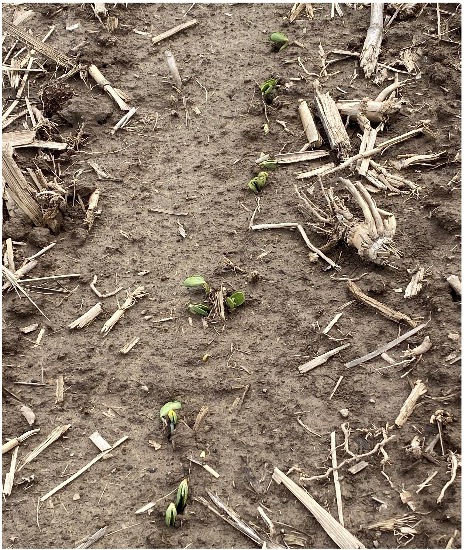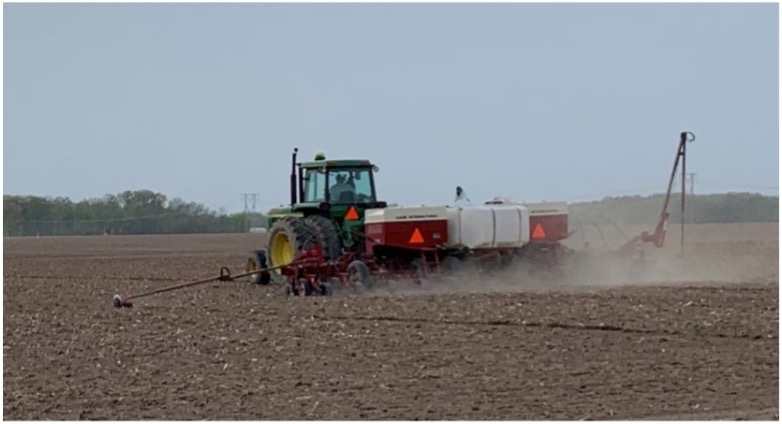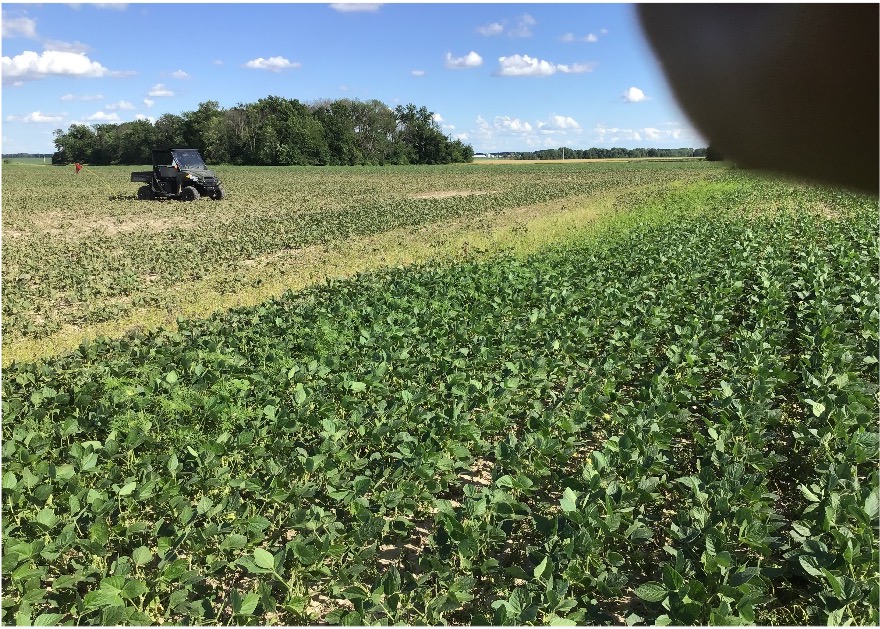It has been a refreshing change to drive the countryside, meet with producers and scout fields that have emerged with little to no issues. I believe we can expect replant concerns to be minimal or as expected even with the recent, heavy rains due to excellent stand establishment. This fantastic start to the season is in part because I feel producers across East Central Illinois were able to do all of the following:
- Plant high quality/high cold germ seed
- Utilize proven seed treatments
- Plant on the first “field fit” date
- Achieve uniform emergence
These four items have been a focus for many soybean producers for at least the previous five years it seems. At this point in the season though, I encourage everyone to shift to the next line item for high performing soybeans: ethylene management.


Ethylene is commonly known as the ‘Fruit Ripening’ hormone. In our case, we can fairly substitute that as grain development. It moves the plant along towards the end of its life cycle to ensure offspring for the next season.
| Soybean Priorities | Producer Goals |
| Genetic offspring | Bushels Produced |
| Offspring survival rate | Profitability |
Remember, the priorities of all soybeans do NOT match our goals as producers. Ethylene is good example of that. Ethylene is produced in response to any stress on the plant (e.g., heat, nutrient deficiency, insect feeding, disease, etc.) It causes the plant to forfeit bushels for maturation expediency in order to accomplish its first priority of genetic offspring.

Photo: Jared Greuel (Cobra application stress on soybeans. Note: the Xtend soybeans still had to metabolize the Xtend application as well, which still resulted in diverted energy stress.)
This is where our next task comes in. Our job is not to prevent ethylene production. Rather, we need to better understand this hormone so we can manage it for our benefit. Here is a simple practice to try out on a few fields this year.
One of the most stressful things we deliberately do to soybeans is apply a herbicide. Traited or not, it does not matter. The soybean must expend energy to metabolize or shed the herbicide in order to survive. Energy invested on anything other than offspring is interpreted by the soybean as – you guessed it – stress. The plant will do what it is programmed to do and produce ethylene in response to stress. We know this will happen and we should direct efforts to offset this. My preference is to tank mix an inexpensive “strobi” fungicide with my herbicide. The strobi active ingredient works to counter the impact of ethylene so the plant won’t forfeit our goal of bushels produced. Randy Dowdy does a great job highlighting this in his interview with the Hefty Brothers about his 192-bushel record.
Before you say I am asking you to spend lots more money – try it out yourself.
One 2.5 gallon jug of generic strobi will likely treat 60 acres and cost roughly $4-5 per acre. That’s 1/3 of a bushel to break even right now. Split an eighty and prove it to yourself.
Many producers are already using products with three A.I.s in their fungicide. I am encouraging to use the same three products, but on a slightly different schedule. Apply the strobi earlier with your herbicide, then apply the triazole and SDHI A.I. as normal.
This is a simple practice you can try and please measure. You will only have absolute confidence if it works with weighing the results. If you have questions about what fungicide to use, check out fellow CCA Soy Envoy Jason Carr’s webinar, “Fungicide Applications to Mitigate Soybean Stress” as a great resource.


 and then
and then